Beat Goes On for a Heartland Baseball Stadium
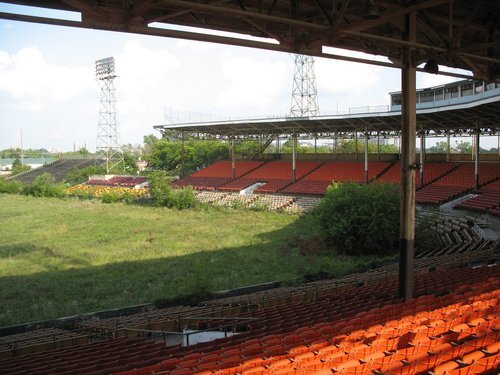
April 17. 2013-—
INDIANAPOLIS—A standing ovation is due for a group of young urban planners who rescued seats from historic Bush Stadium on the industrial west side of Indianapolis. Bush was one of the jewels of American baseball between 1931-1995 until it was torn down.
Bush was often compared to Wrigley Field.
I visited Bush and it’s brick ivy covered outfield walls with manual scoreboard during it’s final season
.
I was told that Bill Veeck imported the Bush ivy to Wrigley Field. That’s not certain. (F.D. Clavey Ravinia Nurseries was regarded as the main source for the Wrigley ivy.) But this much is for sure: Bush was first. Veeck planted the Wrigley bittersweet in 1938.
Hank Aaron began his professional career for three months in 1952 at Bush as a shortstop for the Indianapolis Clowns of the Negro American Leagues. Roger Maris, Razor Shines and the late Cubs outfielder Champ Summers played for the Class AAA Indianapolis Indians at Bush. Slugger Rocky Colavito used to amaze pre-game fans by standing at home plate and throwing baseballs out of the park.
In 1987 John Sayes filmed “Eight Men Out” at Bush. I was on the set along with John Cusack (Buck Weaver), Charlie Sheen (Happy Felsch) and the late great Studs Terkel who played Hugh Fullerton of the Chicago Herald and Examiner.
Over the winter the Indianapolis based People for Urban Progress (PUP) salvaged 9,000 of 11,000 ballpark seats left for ruin. The twenty/thirty something designers and makers re-purposed the seats for city bus stops.
And just in time for baseball season, more Bush seats are now being made available to the public.
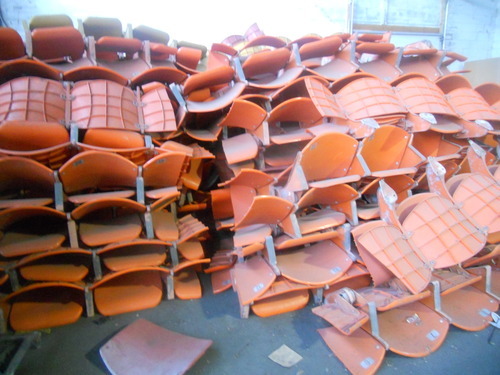
A single seat is $45. A double is $80 a “triple” is $120 and a series of four seats can be had for $160. PUP does not ship the seats unless a fan is willing to pay for shipping. The seats can be picked up at the PUP offices in the artsy Fountain Square neighborhood. PUP is on the second floor of the former G.C. Murphy’s Department Store (1929-1998), 1043 Virginia Ave. just a few blocks off of I-65 and I-70.
The aluminum and plastic seats were sandblasted, lead paint was removed and the seats were reassembled.
Michael Bricker, 30, co-founded PUP in November, 2008. His twin sister Jessica is product manager-designer for PUP.
“When people come in to buy a seat they share their memories of going to games at Bush,” Michael Bricker said. “They met a girl friend there, a couple got married there, one guy remembered staying at a game that went nine extra innings and no one was left in the crowd at two in the morning. A lot of people remember that place. It was the city’s first sports arena.”
The peeps at PUP were stunned at the interest in the seats once they began to sell them.
“We had no idea what the demand would be because it is such a unique product,” Bricker said. “We estimated we’d sell around 50 chairs. We’re over 800. (That was in a period between Feb. 21 and March 13). It’s incredible because it’s allowing us to invest that money back into the community and do more bus stops. It’s covering the cost associated with the project.”
There are 42 bus stop stations in greater Indianapolis. PUP came out of the gate last fall installing stadium seats at 11 stations. “We have plans for 15 to 20 more by the end of the year,” Bricker said.
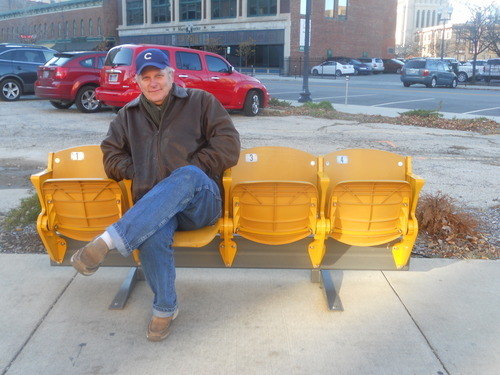
I bought my own chair so I don’t have to drive to Indianapolis to sit in baseball history. (Photo by Jessica Bricker)
For NFL fans, the group also makes wallets ($40) from the roof of the RCA Dome (demolished in 2008). The dome wallets are one of PUP’s most popular items. The group also salvaged vinyl, mesh and polyblend from banners used at Super Bowl XLIV at the new Lucas Oil Stadium in downtown Indy.
Seats will even be installed near the old stadium site.
Last year ground was broken for the site to become the Stadium Lofts apartment complex, with the shell and historic facade of the stadium retained. Even though I’m a Cubs fan, I so wish the White Sox had saved some of Old Comiskey, even just to frame a parking lot.
Bush was the first minor league stadium to have underground tunnels to the dugouts. A center field fence was installed in the 1960s and for part of one season, the Indians had a Native American mascot that operated from a teepee behind the fence. The teepee remained until Bush’s final day.
In 1995 then-Indians GM Cal Burelson told me, “We had an outfielder (in 1972) named Gene Locklear (who went on to play for the Reds, Padres and Mets). Today he’s an accomplished artist on the West Coast. One time he was given a fine for missing a bus. Instead of paying, he asked to paint the teepee.” The teepee now sits in the center field concourse of the present day Victory Field in the shadow of Lucas Oil Stadium.
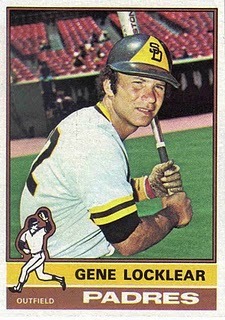
Bush opened in 1931 as Perry Stadium and was renamed Victory Field in 1942 to honor the American war effort. In May, 1932 the first night game was played in at the stadium, with the Indians losing 6-4 to Paul Dean (Dizzy’s brother ) and the Columbus Red Birds.
The 1954 Indianapolis Clowns were managed by Oscar Charleston, one of the first Negro Leage players elected to the Baseball Hall of Fame. The ‘54 Clowns featured female second baseman Connie Morgan, who replaced Toni Stone who moved on to the Kansas City Monarchs. Stone was the first professional female baseball player.
The ballpark was renamed Bush Stadium in 1967 to commemorate Indianapolis native, ex-Tigers shortstop (1908-1921) and former White Sox manager Owen J. “Donie” Bush. Victory Field is the present day home of the Indianapolis Indians, a Pittsburgh Pirates affiliate.
The first Bush rock concert took place on Aug. 10, 1972.
The festival included Chuck Berry, Foghat, the trippy San Francisco band It’s a Beautiful Day and others. [REO Speedwagon played Bush in 1975.]
It was promoted by Tom Battista, an Indianapolis native who now co-owns the popular Italian restaurant Bluebeard, 653 Virginia Ave., a block away from the PUP offices. Battista is also stage manager for baseball fan Jimmy Buffett. The restaurant is named after the 1987 Kurt Vonnegut novel about a famous painter. Vonnnegut is an Indianapolis native.
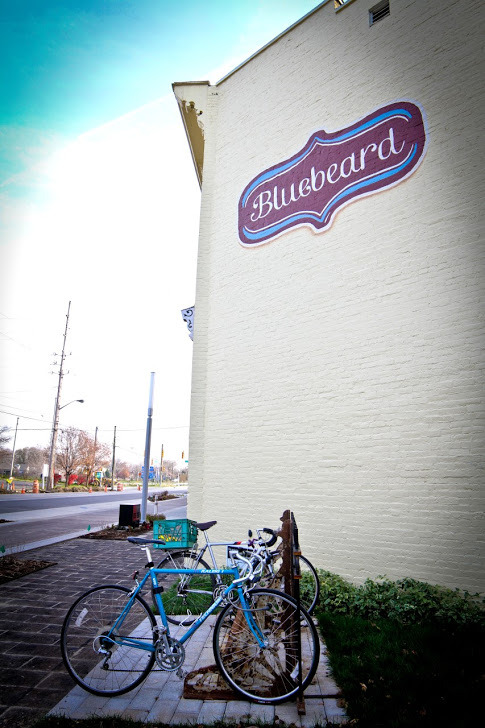
“I majored in Latin American history at Indiana University,” Battista says. “I was one hour short of getting my degree in ‘72. A friend of mine was hanging out with the promoter of the show in Clermont, Indiana. There was a court injunction against the show. They got an agreement to move it to Bush stadium at noon on Friday. And the show was noon on Saturday. And they had to be out of there at noon on Sunday.” Bill Hanley sound was from Indianapolis and Tom Fields did the lighting companies. Hanley designed, built and operated the Woodstock festival sound system. Hanley’s payment for the Woodstock sound system totaled less than five cents per audience member.
“We worked all through the night,” Battista said. “We set up towers with spotlights. Staging. Bill devised these wagons that were 25 feet long and maybe 12 feet deep. You would pre-set one act on it, roll it up center stage, then at the other wing stage left behind the speaker stacks they set up the next band. Then the third wagon on the other side was empty. So when the first act was done you would move them off stage right and roll the wagon in from stage left. I had never done anything in the music business before that but I was told if I came to Bush I could see how rock n’ roll worked.”
Battista immediately connected with the show’s promoter Bruce DeForest, a former sound man with the Rolling Stones.
And DeForest asked Battista to build the iconic Bottom Line nightclub in Greenwich Village neighborhood of Manhattan, New York City. The 400-seat Bottom Line opened in 1974 and closed in 2004, just short of it’s 30th anniversary. Bruce Springsteen played early showcase concerts at the club and Lou Reed recorded the live album “Take No Prisoners” at the Bottom Line. Van Morrison, Neil Young, Billy Joel and Linda Ronstadt were others who played the Bottom Line.
“In it’s day it was THE place,” he said. “And that’s how I got in the business.”
Battista and his wife Sharon started having children—their daughter Victoria is an economist at the Bureau of Labor Statistics in Washington, D.C. and their son Ed is a partner at Bluebeard. Battista nestled back in at his hometown of Indianapolis.
“The Amy Grant show came through town,” he says. “The production people that did Amy Grant did religious shows in the winter and Buffett in the summer.”
Battista knew one of the crew members and mentioned that if they ever needed a fill in during a summer run, he was available. “He called me the next day because his assistant had to go out and do Bruce Springsteen,” Battista recalls. “When I asked my wife if I could go out, the only thing she said was ‘How much?’ When I said ‘how much,’ she said, ‘See ya.’ Battista has now been with Buffett since 1992.
“He’s the greatest guy and it is a great camp,” Battista says. “They take care of their people. He’s lucky and he knows it. He’s not pretentious. He’s a big Cubs fan. I’m not into sports at all, it’s all entertainment to me. But they all love the Cubs and that’s a good thing.”

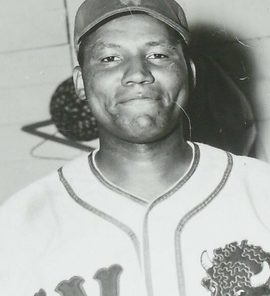
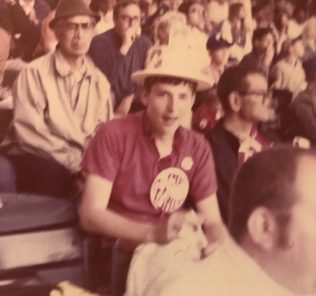
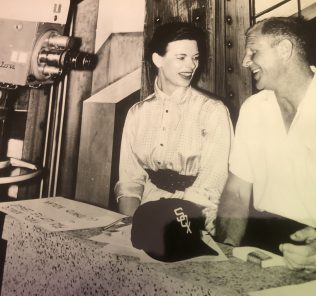
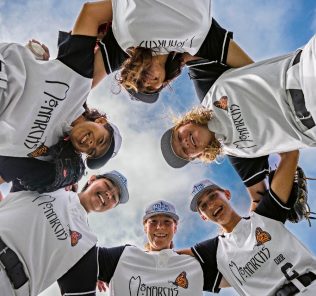
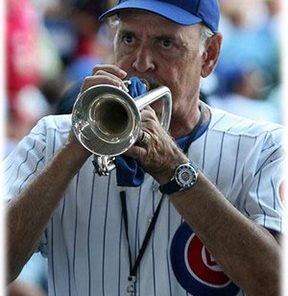
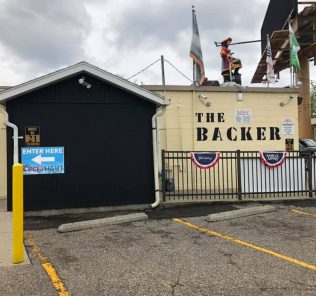

Leave a Response